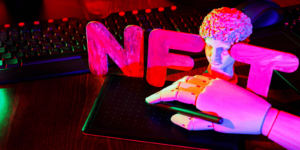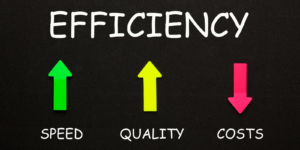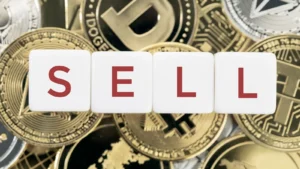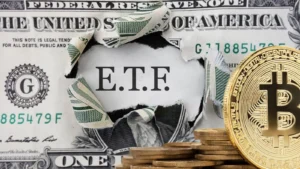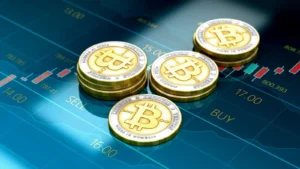There is no doubt that digital collectibles are on the rise. A recent study by Deloitte showed that nearly half of all millennials surveyed said they would be interested in buying or collecting digital collectibles. This is because digital collectibles offer a new and unique way to own and trade virtual assets. As the popularity of digital collectibles continues to grow, so does the need for a reliable marketplace where these items can be traded. That is why we created this guide to NFT Marketplace for beginners.
What are NFTs?
NFTs, or non-fungible tokens, are digital assets that allow for the ownership and trade of unique digital items. Unlike traditional digital assets, NFTs use blockchain technology to create ownership records for individual token holders as well as record exchanges between owners. From artwork to music to virtual goods, holders can buy and sell exclusive digital assets using NFTs as a form of currency.
The success of this new technology depends on the continued stability of an underlying blockchain network. It has changed the way buyers and sellers interact with one another in the digital space and could prove to be the next big thing in the world of online commerce.
NFT and Cryptocurrencies
NFTs (non-fungible tokens) and cryptocurrencies are both digital assets that can be bought and sold, but they serve different purposes and have some key differences.
Cryptocurrencies like Bitcoin and Ethereum are fungible, which means that when you buy Bitcoin in Dubai or any other place each unit of currency is interchangeable with another. For example, one Bitcoin is equivalent to another Bitcoin, and it doesn’t matter which one you have. Cryptocurrencies are typically used as a medium of exchange, a store of value, or as a speculative investment.
On the other hand, NFTs are unique, one-of-a-kind digital assets that are stored on a blockchain. They can represent anything from digital art to music, videos, virtual real estate, and more. NFTs are typically used to prove ownership and authenticity of a specific digital asset, and they can be bought and sold in marketplaces just like cryptocurrencies.
Introduction to the NFT market place
The NFT Marketplace is revolutionizing the way we trade digital art and Non-Fungible Tokens. It has opened up a whole new world of possibilities for collectors, creators, and investors to participate in an economy that is driven by blockchain technology. By giving ownership rights to creators and collectors, it has enabled artwork to be virtually traded securely and easily.
Moreover, NFTs come with built-in scarcity that makes them special compared to similar traditional items and art pieces in both physical and digital forms.
Popular Models of NFT market places
Universal e-bay type NFT Market place
The Universal e-bay type NFT Market place in crypto is a popular and efficient model in the NFT marketplace. It has become an increasingly attractive model due to its simple and functional setup, allowing users to easily buy, sell, trade, and manage their digital assets in one platform.
Its user-friendly approach makes it suitable for both novice and experienced NFT traders. Transactions in this marketplace are secured with blockchain technology, ensuring that buyers have certainty of ownership and sellers have trust in the market. NFT is
Single NFT-type marketplace
One of the most popular models in the NFT marketplace is that of a single-type platform, specializing in one type of asset. This is the crypto model that provides users with access to a specific type or class of NFTs, such as digital art, gaming items, in-game character pieces, or non-fungible tokens for domain names and music rights. The popularity of this model comes from its focused approach to selecting a certain segment in the NFT market to cater to their specific needs.
Hybrid NFT marketplace
One of the more popular models out there is the hybrid NFT marketplace. Such platforms give users a combination of centralized exchanges as well as decentralized ones, allowing them to trade in both in-game items and physical products through blockchain technology. This type of marketplace provides its users with a great deal of flexibility in paying for their NFTs in crypto, further increasing its popularity in the crypto-sphere.
Top Trends of Marketplace
Multichain NFT marketplace
One popular model for NFT marketplaces is Multichain, which includes features such as interoperability and flexibility within a vast ecosystem of crypto networks. By leveraging an array of public chains in their framework, Multichain makes it easy to move between different asset types like tokens in a streamlined manner across multiple platforms simultaneously.
Gaming NFT marketplace
The growth in gaming-focused NFT marketplaces has been exponential, fueled by an increasing desire to monetize in-game assets through these virtual trading post setups. By becoming a member of one of these markets, gamers can now buy and trade various in-game items in a safe and secure environment.
Metaverse based NFT
One popular model of the NFT marketplace is based on Metaverse, an open-source platform empowering users to create, manage and distribute digital assets in a decentralized manner. For instance, the use of smart assets in Metaverse makes ownership and authenticity clear while also allowing creators to easily build on existing assets without comprising security, creating a higher degree of synergy between these digital assets.
Cross-chain NFT marketplace
This model offers a platform that allows users to transact in different cryptocurrencies without having to resort to an exchange. As such, it is a popular choice for those who want to buy or sell digital items in multiple crypto wallets at once.
Celebrity NFT marketplace
One of these is the celebrity NFT marketplace, in which rare collectibles are offered in four tiers. At the highest tier lies the most exclusive collectibles in which a limited edition item has been created in collaboration with a well-known individual or brand. The next tier offers unique pieces that have only been created once and feature a high-end providence story or aesthetic.
In the third and fourth tiers, everyday buyers have access to economical non-fungible tokens of varying degrees of rarity depending on where in those tiers they fall.
What are the upsides of the marketplace?
Efficiency
The popularity of NFT model marketplaces in the crypto space has been fueled by the enormous levels of efficiency they offer to both buyers and sellers in a digital sphere.
These models are proving to be highly efficient in providing users with the convenience, transparency, and cost-effectiveness they’re searching for in buying and selling non-fungible tokens such as art, music, in-game collectibles, or even useful information.
Integrity
NFT marketplaces in the crypto world are becoming increasingly popular, and they often feature models that emphasize integrity in their transactions. This practice is doubly important in crypto-based transactions as they generally take place entirely in the digital realm. To ensure secure transactions in these marketplaces, models that prioritize integrity are vital to foster trust between buyers and sellers in the rapidly growing NFT space.
Community
One approach is the community model, in which individuals in a given niche form an online marketplace that serves as a hub for the sharing and trading of NFTs in the category. This encourages a sense of camaraderie and social aspect in the buying and selling process, to allow citizens in the NFT space to better benefit from each other’s unique skillsets and interests.
Suitable rewards
The most common approach is to take a percentage of all sales commissions in the marketplace in exchange for providing a platform to promote, list, and transact digital artwork. This incentivizes the marketplace to maintain top-notch service as they rely on repeat business. On top of this, some platforms offer block rewards for listing specific content and tracking downloads or streaming music within their platform, to attract more content creators in all aspects of multimedia.
Future of NFT
The future of non-fungible tokens (NFTs) in crypto is an exciting new frontier in digital ownership. Therefore, as the crypto world moves forward in its development, it is predicted that NFTs will become increasingly popular in the years to come. Whether used in gaming, digital art, or simply in its trading form, NFTs are shaping up to become a key element in how we can keep track of ownership in the digital age. It could very well be that the future of property rights rests on these unique tokens, and we can all look with eager anticipation at how they shape our shared future.


